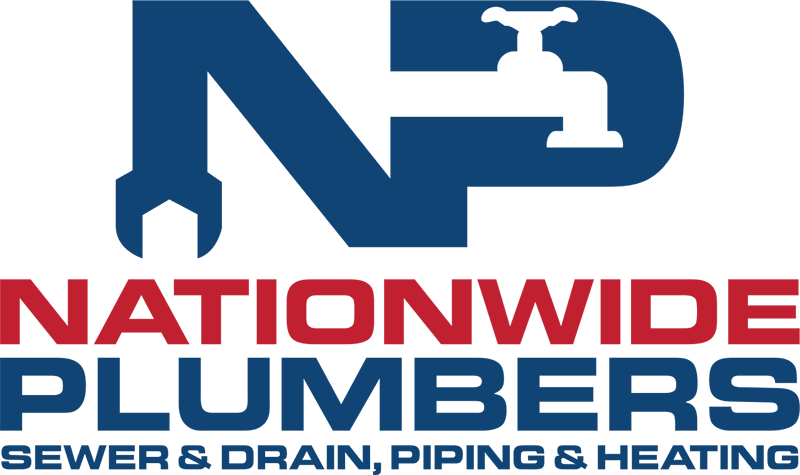
The complex network of pipes beneath your building plays a vital role in everyday life. Drains whisk away wastewater, and sewer lines carry it away for proper treatment. But what happens when these essential pathways become clogged or damaged? The result can be a messy, inconvenient, and potentially hazardous situation.
This comprehensive sewer care guide can help you take charge of your sewer and drain care. We’ll explore the common causes of clogs, effective prevention strategies, and the signs that might indicate a problem brewing beneath the surface. We’ll also explore professional drain cleaning and sewer line repair so that you can figure out your potential plumbing issues.
Common Causes of Drain and Sewer Problems
Our drains and sewer lines are built to handle a specific type of waste. Unfortunately, they can become clogged by a surprising array of culprits. Foul odors, slow drainage, frequent clogs, gurgling sounds, and sewer backups are all signs of sewer or drain problems. Here are some of the most frequent offenders:
- Grease and Oil: Grease cools and solidifies, clinging to pipe walls and attracting other debris, eventually forming a stubborn blockage.
- Food Scraps: Avoid sending large chunks of food scraps, coffee grounds, or fibrous vegetables down the drain, as they can easily cause clogs.
- Hair: Shower drains tend to trap hair, which can accumulate and form a barrier that hinders water flow.
- Soap Scum: Over time, soap scum can build up on the interior of pipes, gradually constricting the passage and leading to slow drainage.
- Foreign Objects: Accidental drops – toys, jewelry, or cleaning cloths – can find their way into drains, creating a major blockage. Be mindful of what goes down the drain to avoid an unwelcome surprise.
- Tree Roots: Tree roots seeking water can infiltrate sewer lines buried underground. These roots can grow into the pipes, causing cracks, breaks, and significant blockages.
Proactive Sewer Maintenance Tips for Healthy Drains
A little prevention and care goes a long way when it comes to sewer and drain health. Here are some simple yet effective sewer maintenance tips to keep your pipes flowing freely:
- Install Drain Guards: These mesh screens placed over drains trap hair and other debris before entering the pipes.
- Dispose of Grease Responsibly: Avoid pouring grease down the kitchen drain. Allow it to cool and harden in a bag or box before discarding it in the waste bin.
- Be Mindful of What You Flush: Stick to the “3 Ps” when flushing toilets: pee, poop, and (toilet) paper. Avoid flushing foreign objects, feminine hygiene products, or flushable wipes, which can contribute to clogs.
- Regularly Clean Drains: Pouring a pot of hot (not boiling) water down the drain can help melt away grease buildup. A baking soda and white vinegar solution can be an effective natural cleaning solution for minor clogs.
- Schedule Professional Drain Cleaning Near You: Consider an annual professional drain cleaning, especially for drains prone to clogs. The cleaning can help pinpoint and resolve potential issues before they baloon into something bigger.
Hydro Jet Drain Cleaning: A Powerful Solution for Tough Clogs
Hydrojet drain cleaning can be an effective sewer cleaning and drain care solution when traditional methods fail. This powerful technique involves emitting a high-pressure stream of water to blast away even the most stubborn clogs.
A certified plumber connects a specialized nozzle with a high-pressure hose and feeds it into the drain line. This pumps water at a force of around 3,000 to 5,000 psi.
The pressurized water stream blasts through the blockage, dislodging grease, soap scum, debris, and even tree roots. The force also scours the interior of the pipes, removing any lingering buildup that could contribute to future clogs.
The dislodged materials and debris are flushed out of the system, leaving your drains clean and clear.
The best thing about hydrojets is that they are not likely to damage old drain pipes and thoroughly clean your pipes from the inside, reducing the risk of blockages in the future.
Sewer Line Repair: Addressing Underlying Issues
While hydrojetting is a powerful cleaning tool, it may not always be the ultimate solution. Sometimes, the problem might lie deeper within the sewer line itself. Some common sewer line issues that require repair are pipe breaks, collapsed sewer lines, and misaligned pipes.
In this case, you will need to get your sewer line repaired:
- Inspection: A plumber will inspect the sewer line with a camera to find the exact location of the clog and extent of the damage.
- Trenching (if necessary): For underground repairs, excavation might be required to access the damaged section of the sewer line.
- Repairing or Replacing the Pipe: Depending on how severe the damage is, the plumber may repair the existing pipe or replace the affected section with new material.
- Lining (optional): In some cases, trenchless sewer line repair techniques like pipe lining can be used to rehabilitate the damaged section without extensive digging.
- Testing and Clean-Up: Once the repairs are complete, the plumber will test the sewer line to ensure proper functionality and clean up the work area.
Where Can I Find Reliable Sewer Cleaning Near Me?
Maintaining a healthy sewer and drain system requires proactive prevention and prompt action when problems arise.
Nationwide Plumbers is your one-stop shop for all sewer and drain care needs. Our preventative maintenance plans can help uncoverfind out drain and sewer issues and repair them before they become bigger, saving you time, money, and frustration.
Let our team of sewer plumbers near you to maintain your drain and sewer system so that your living space remains clean and healthy.
